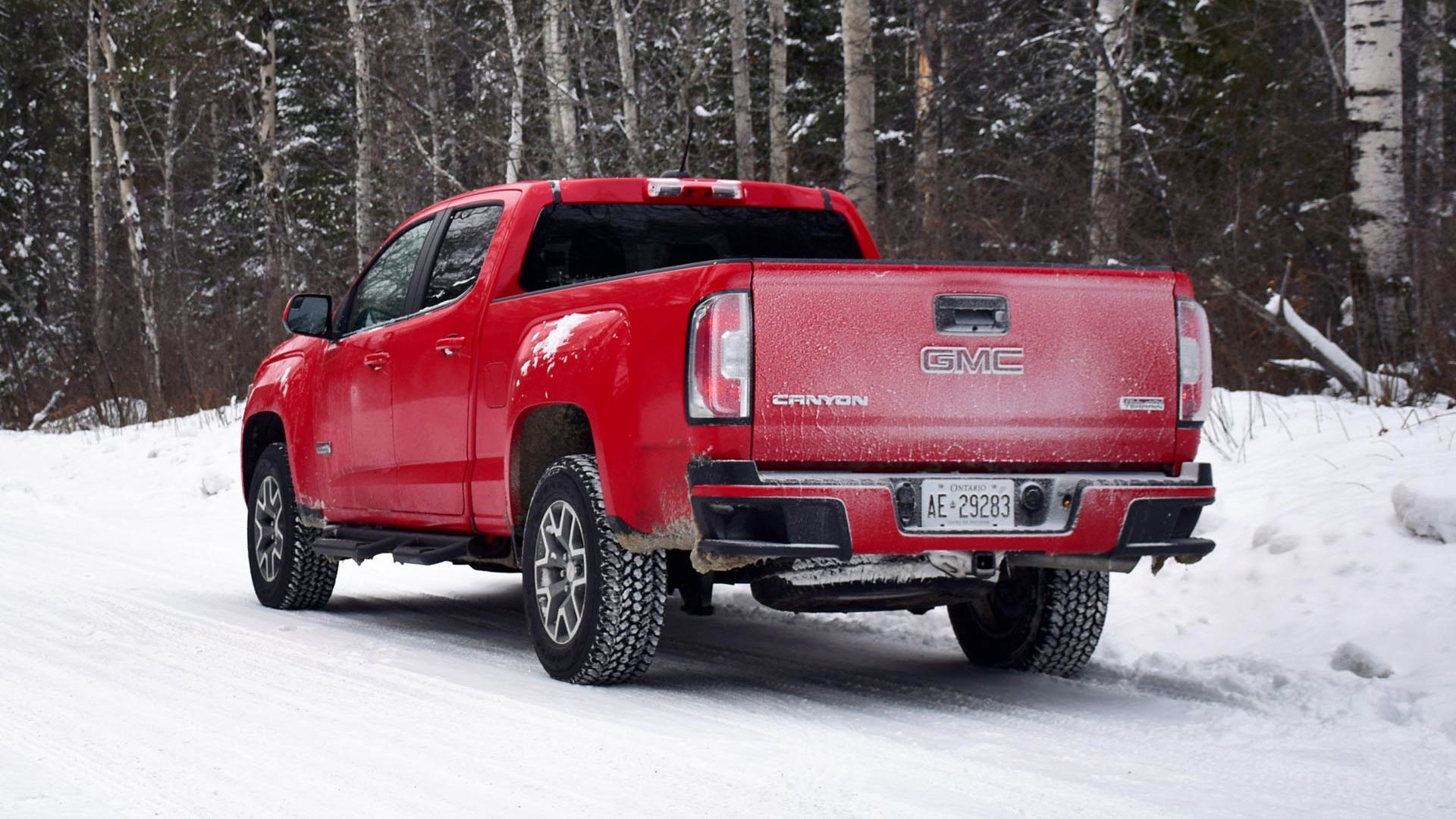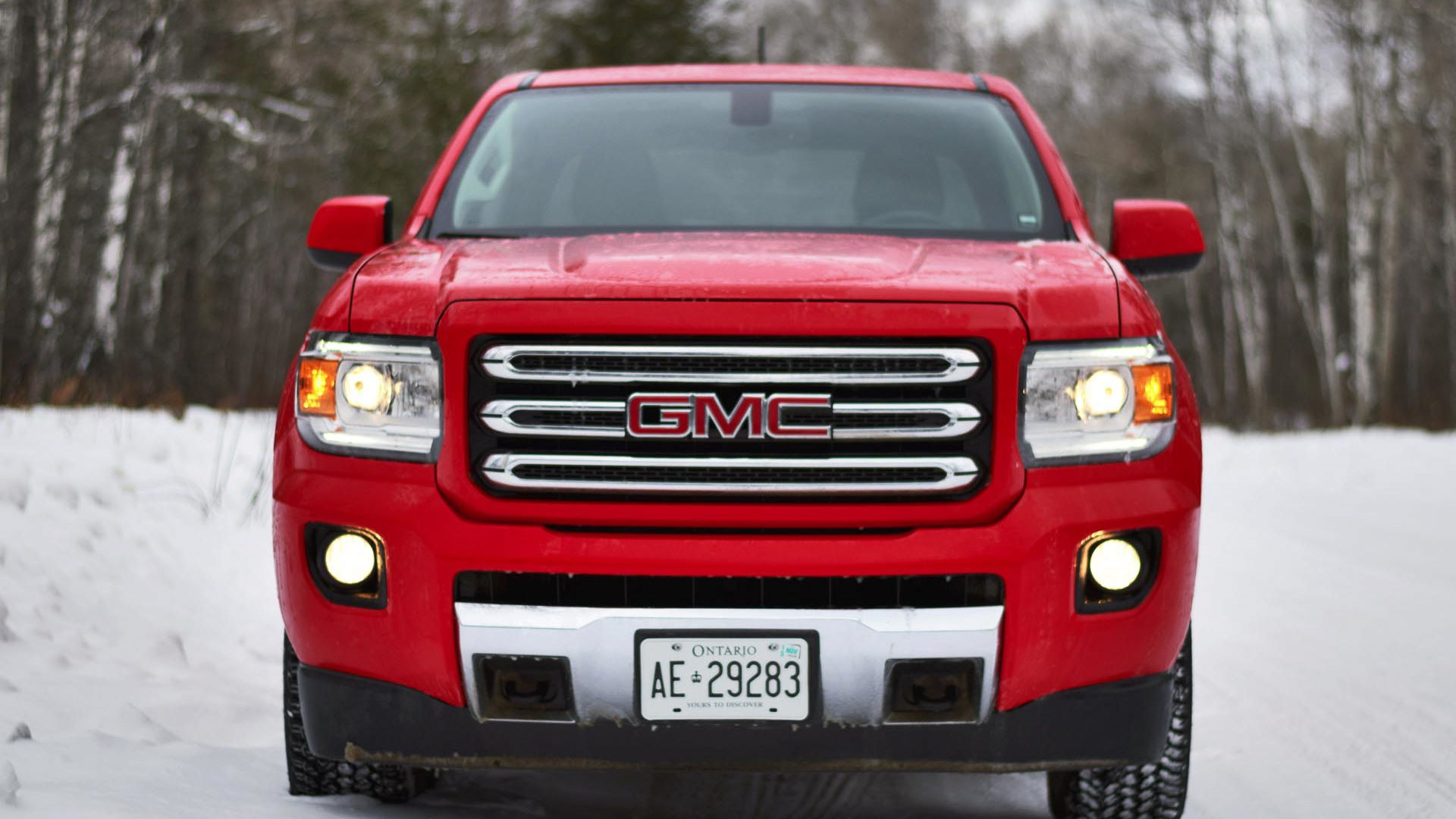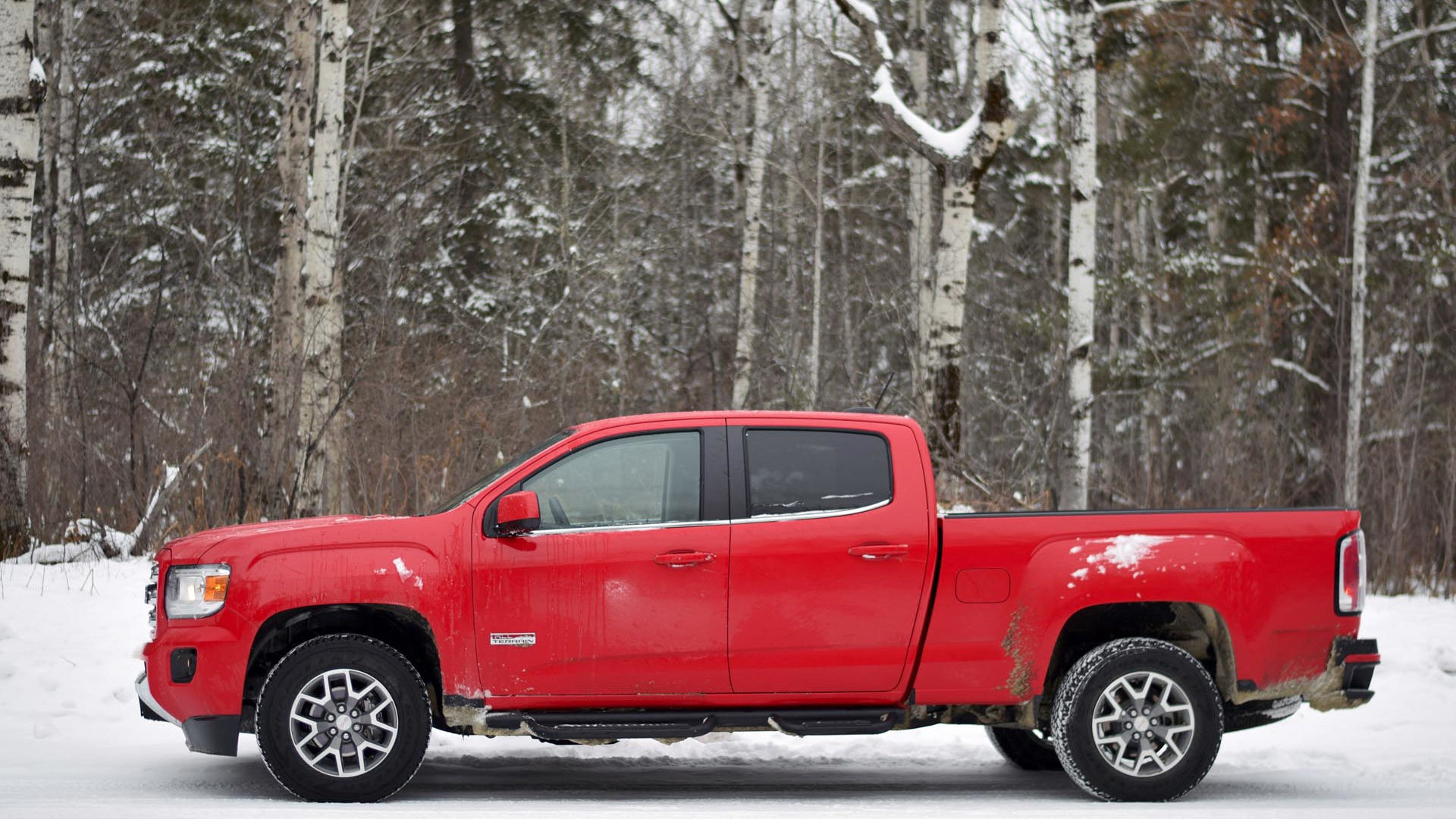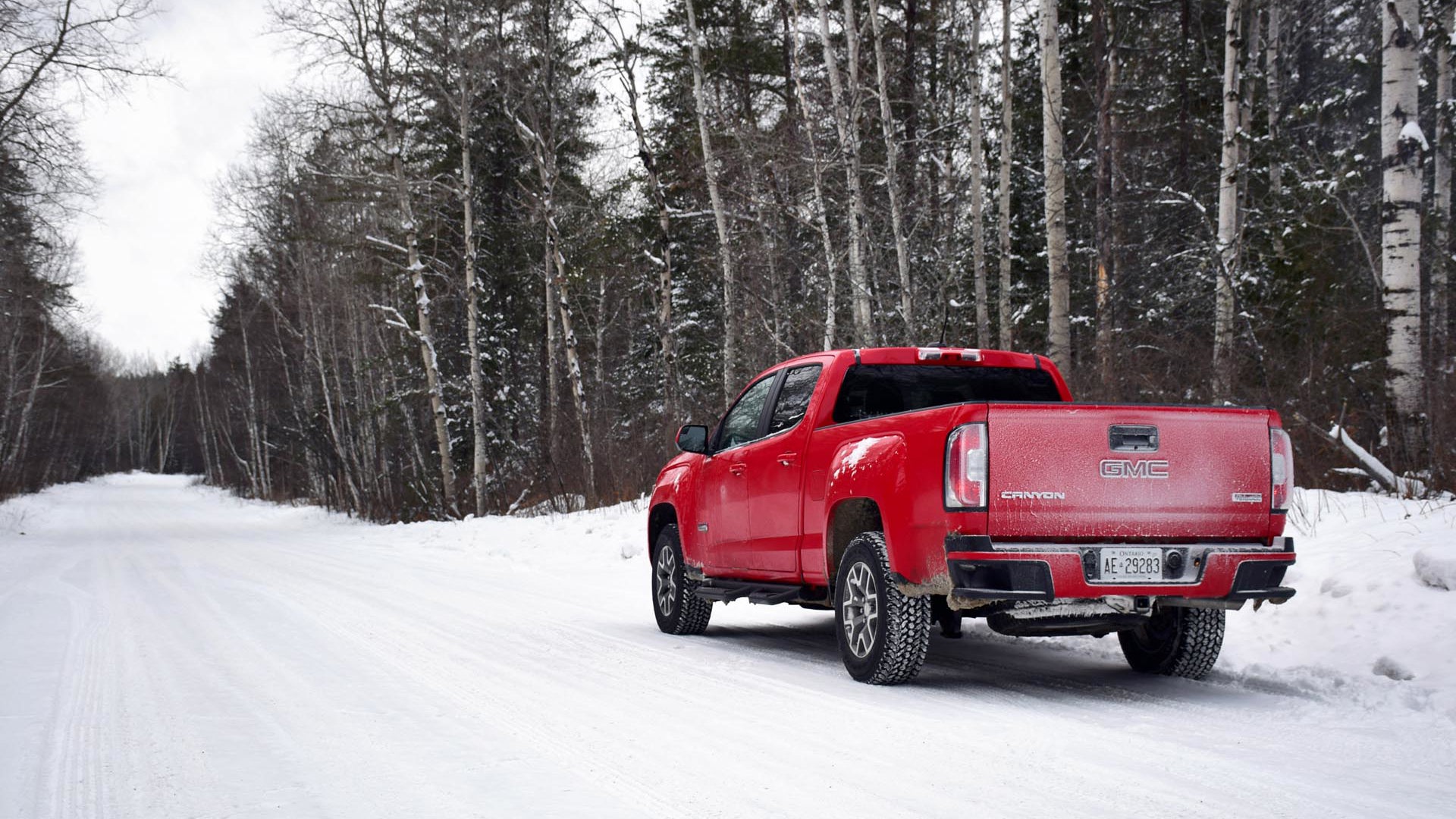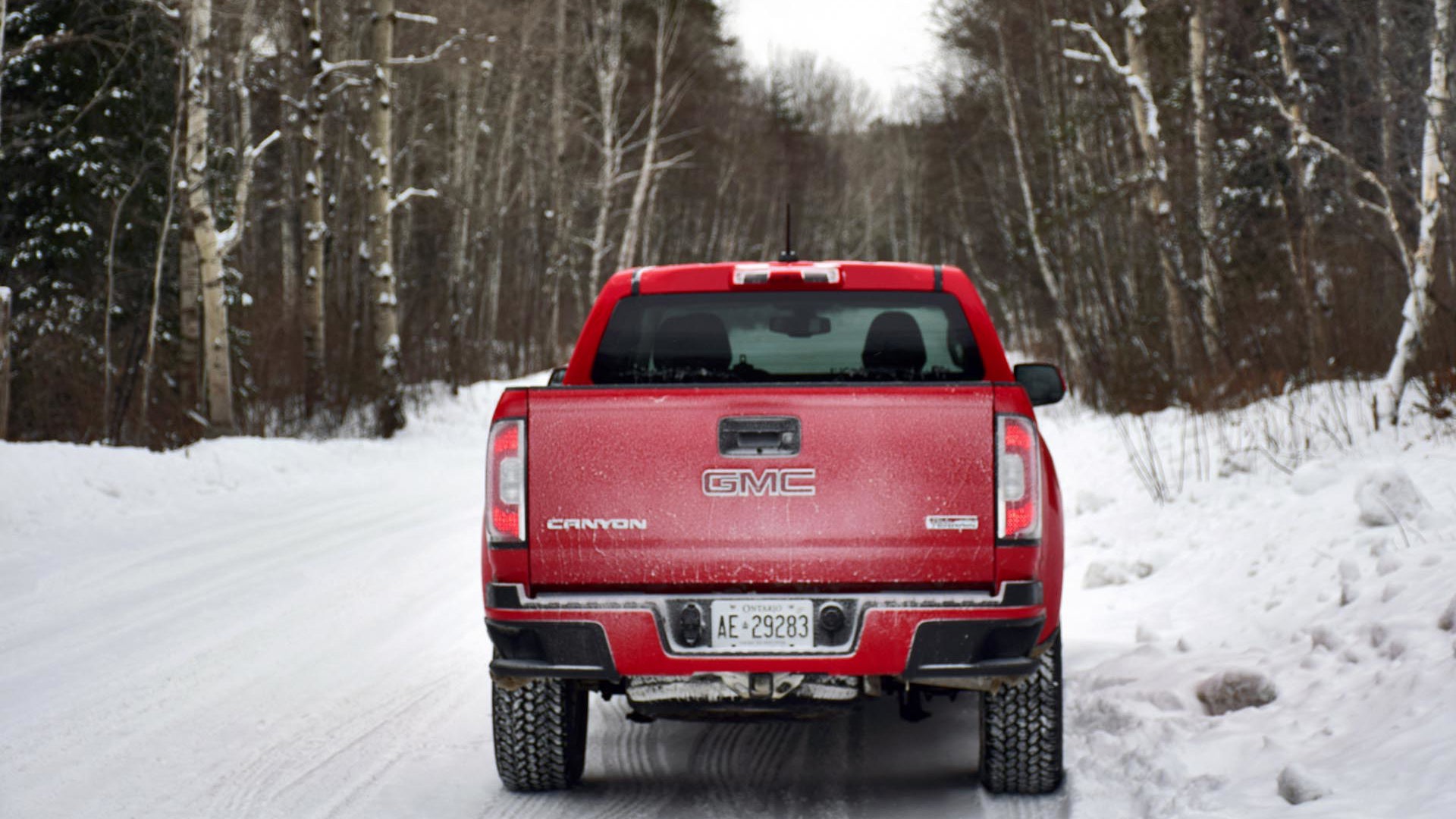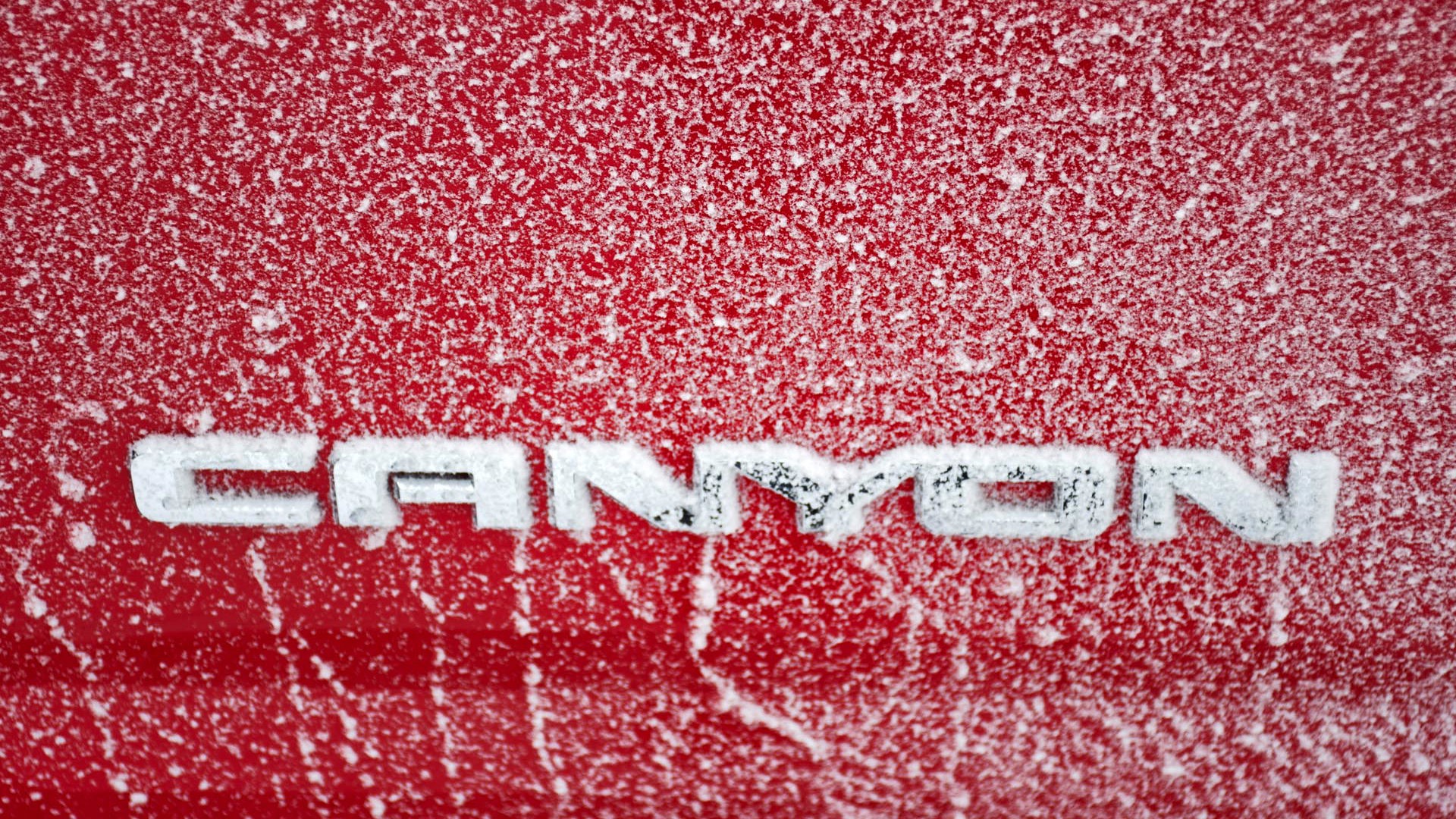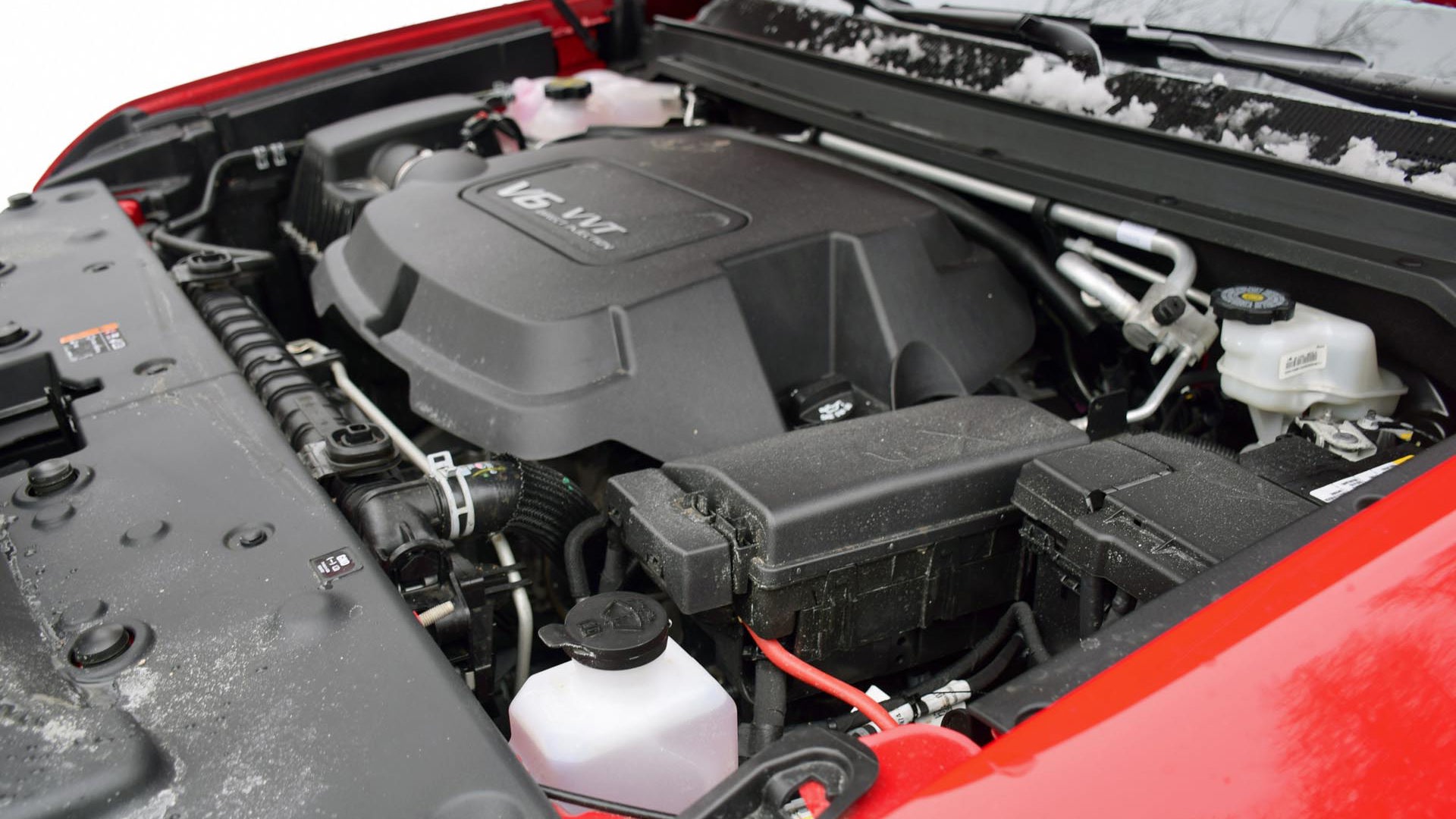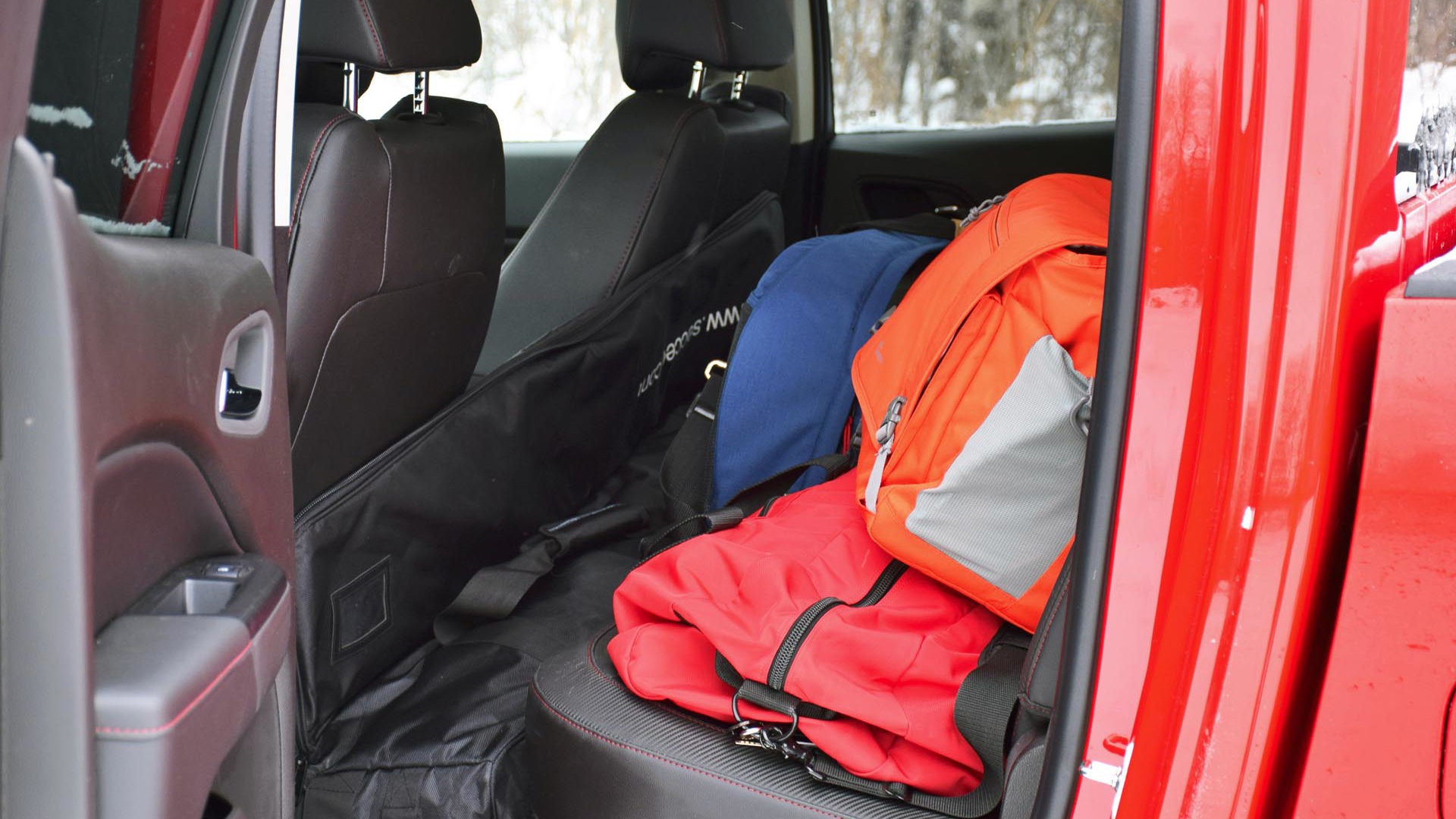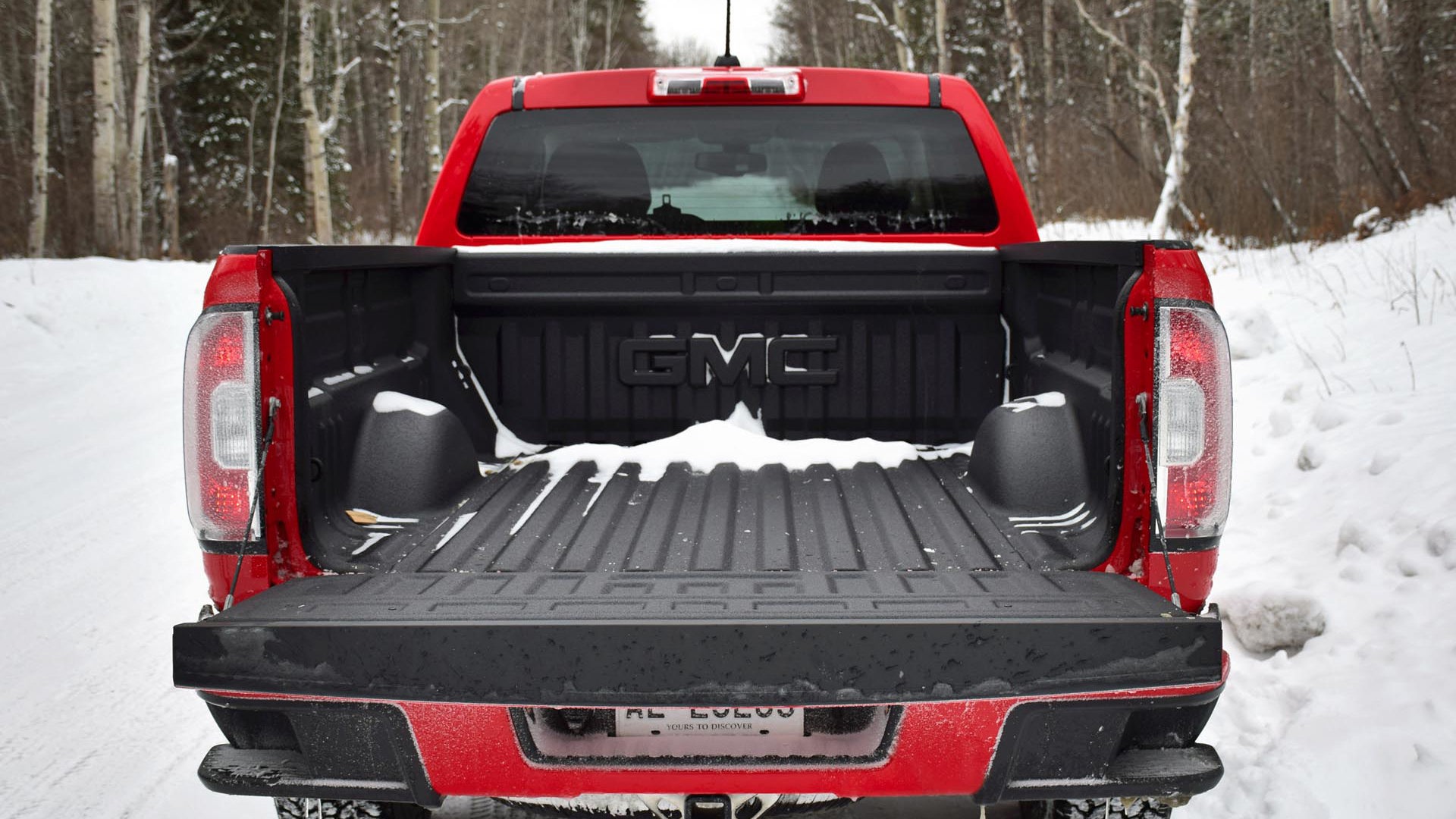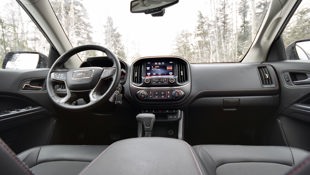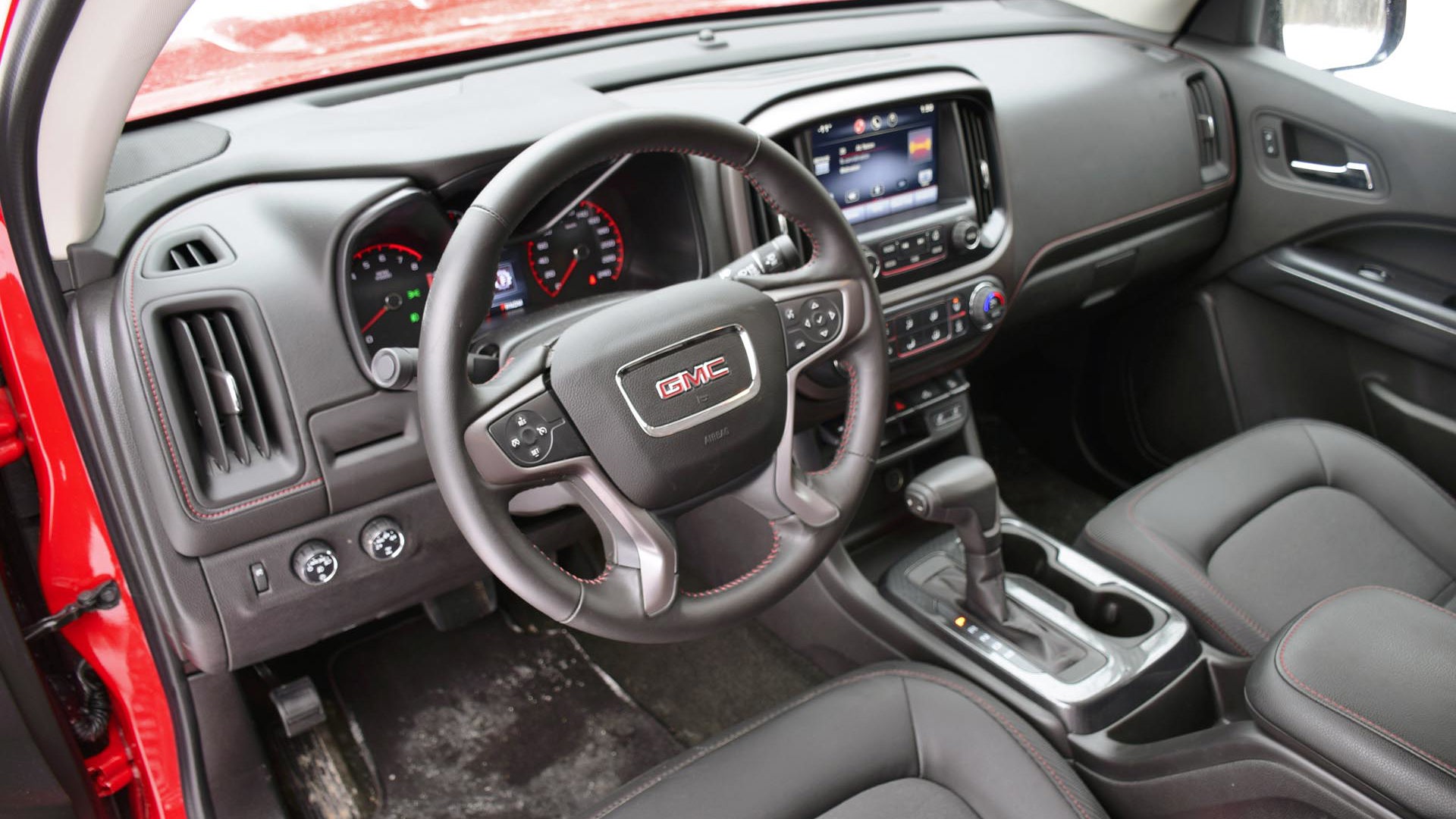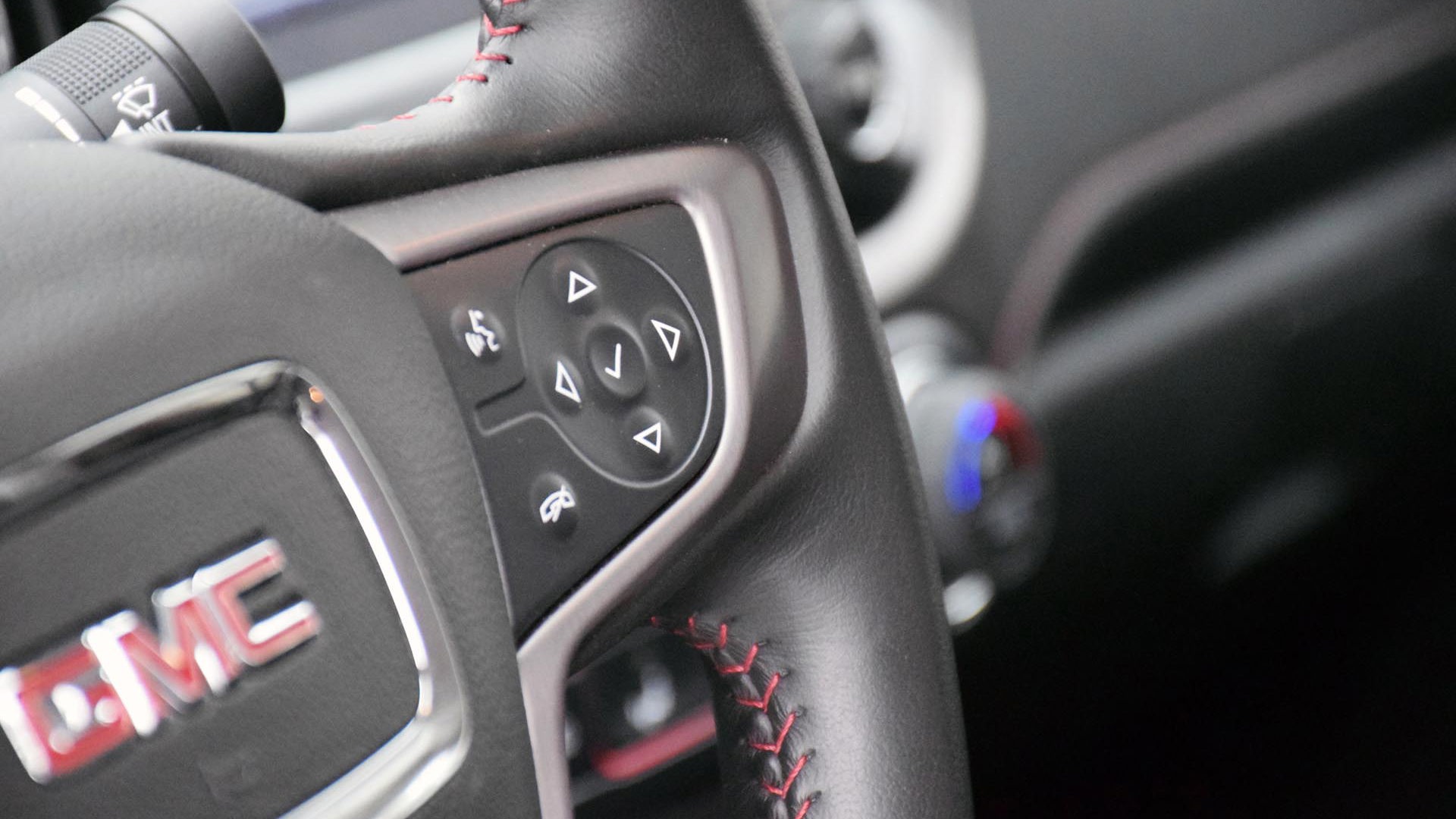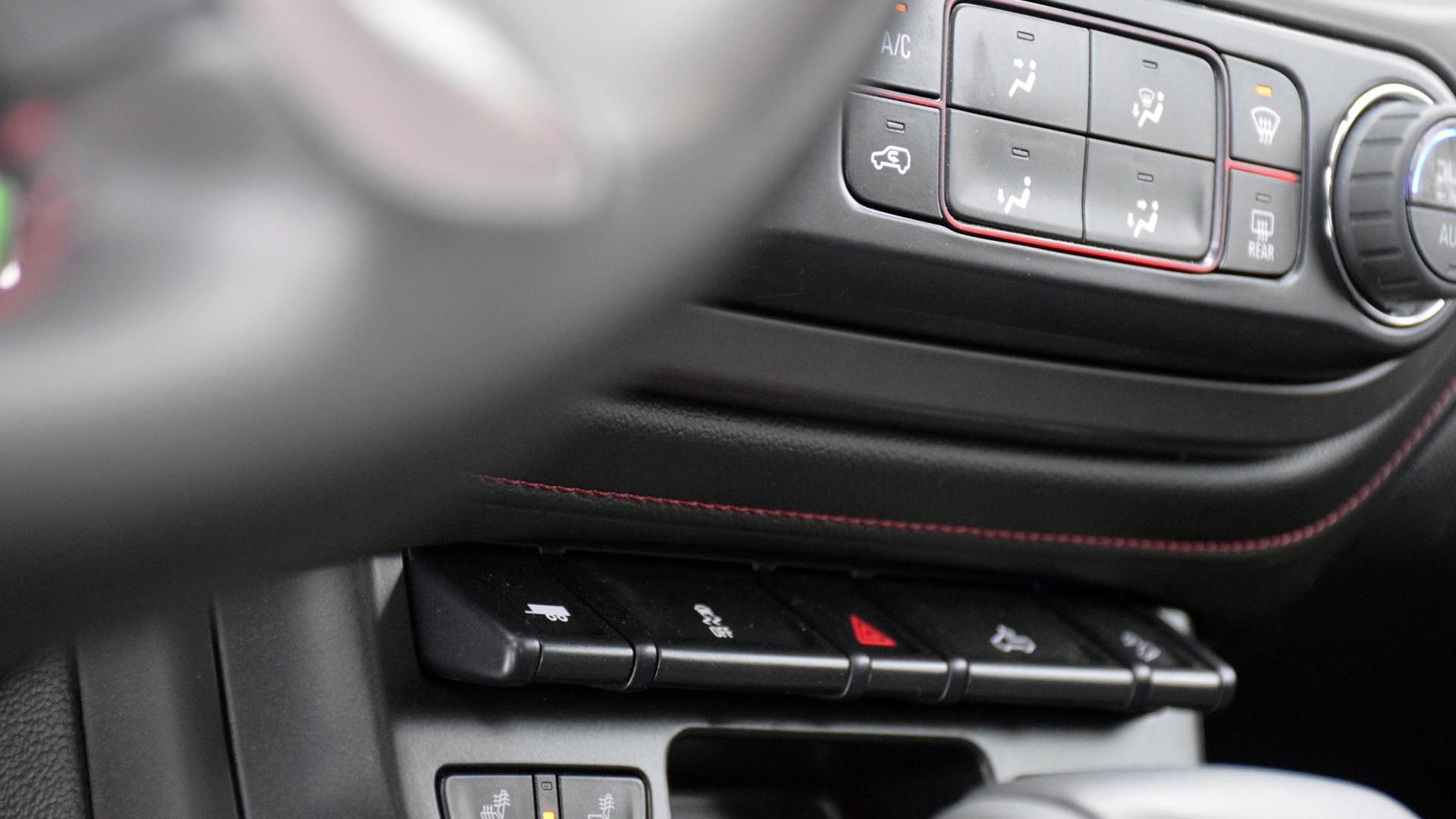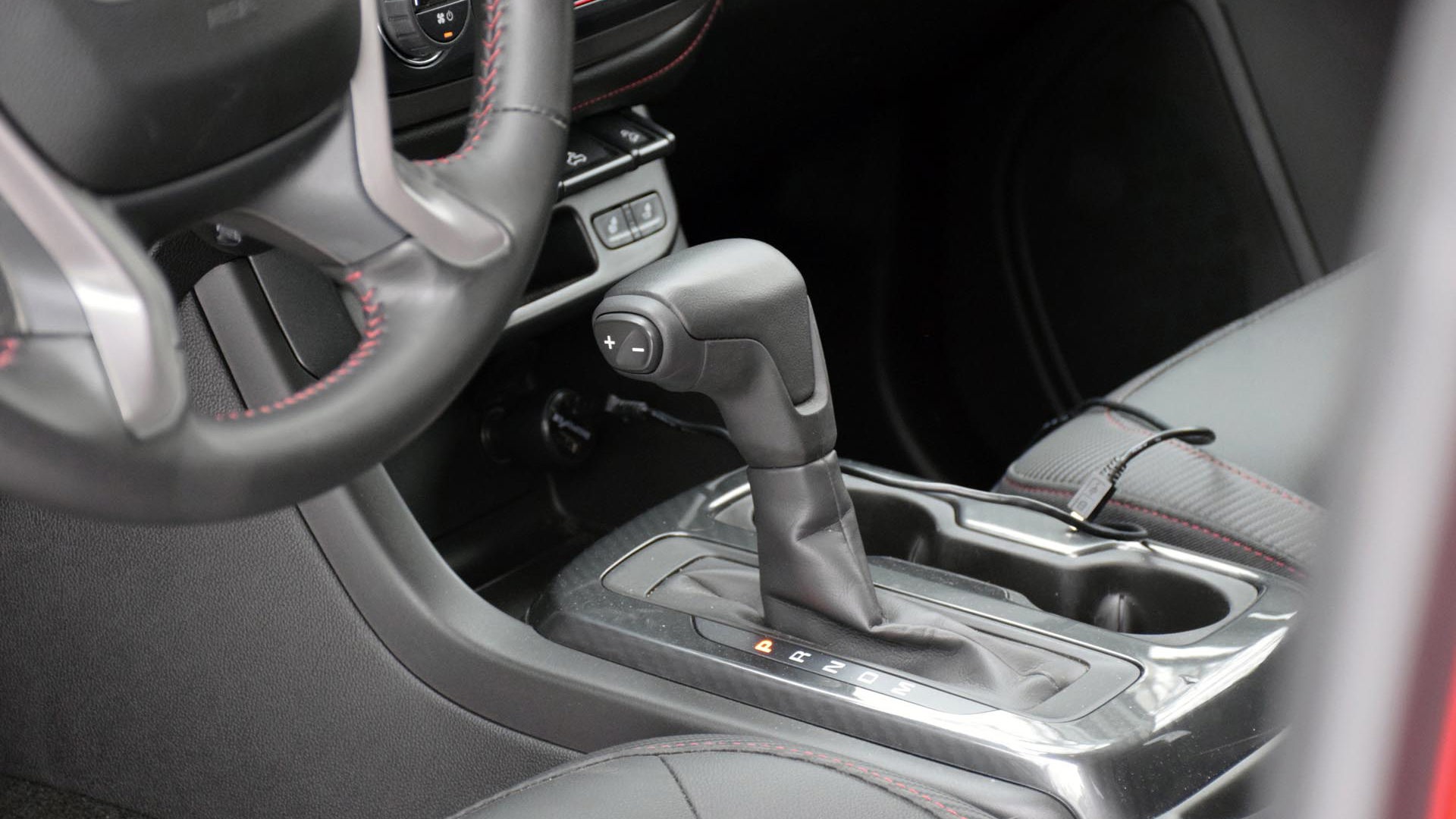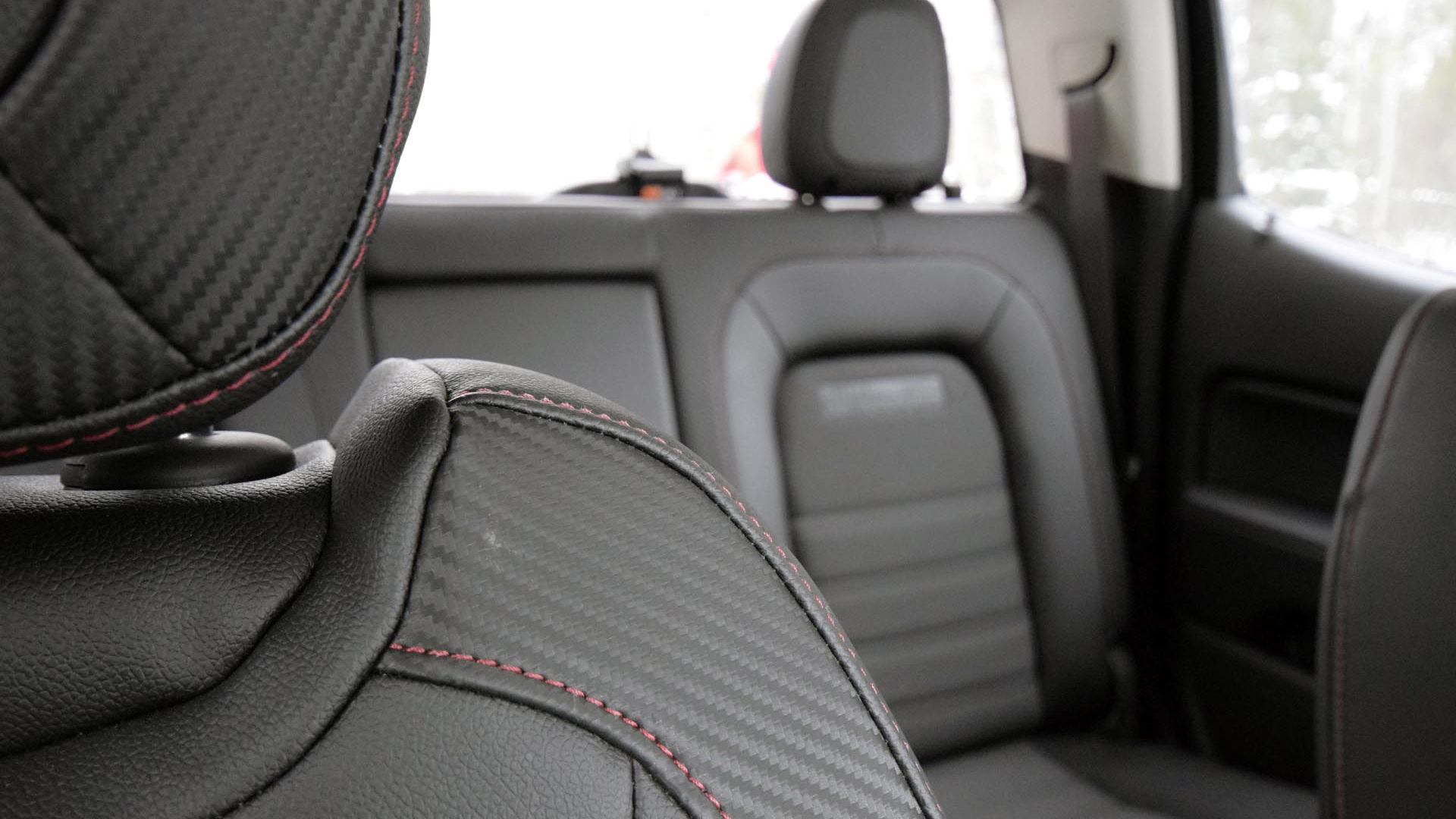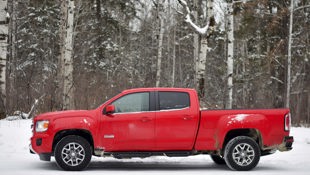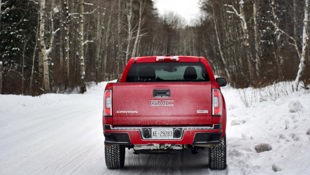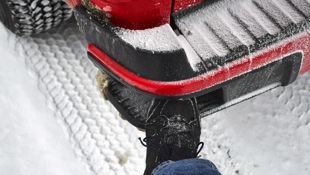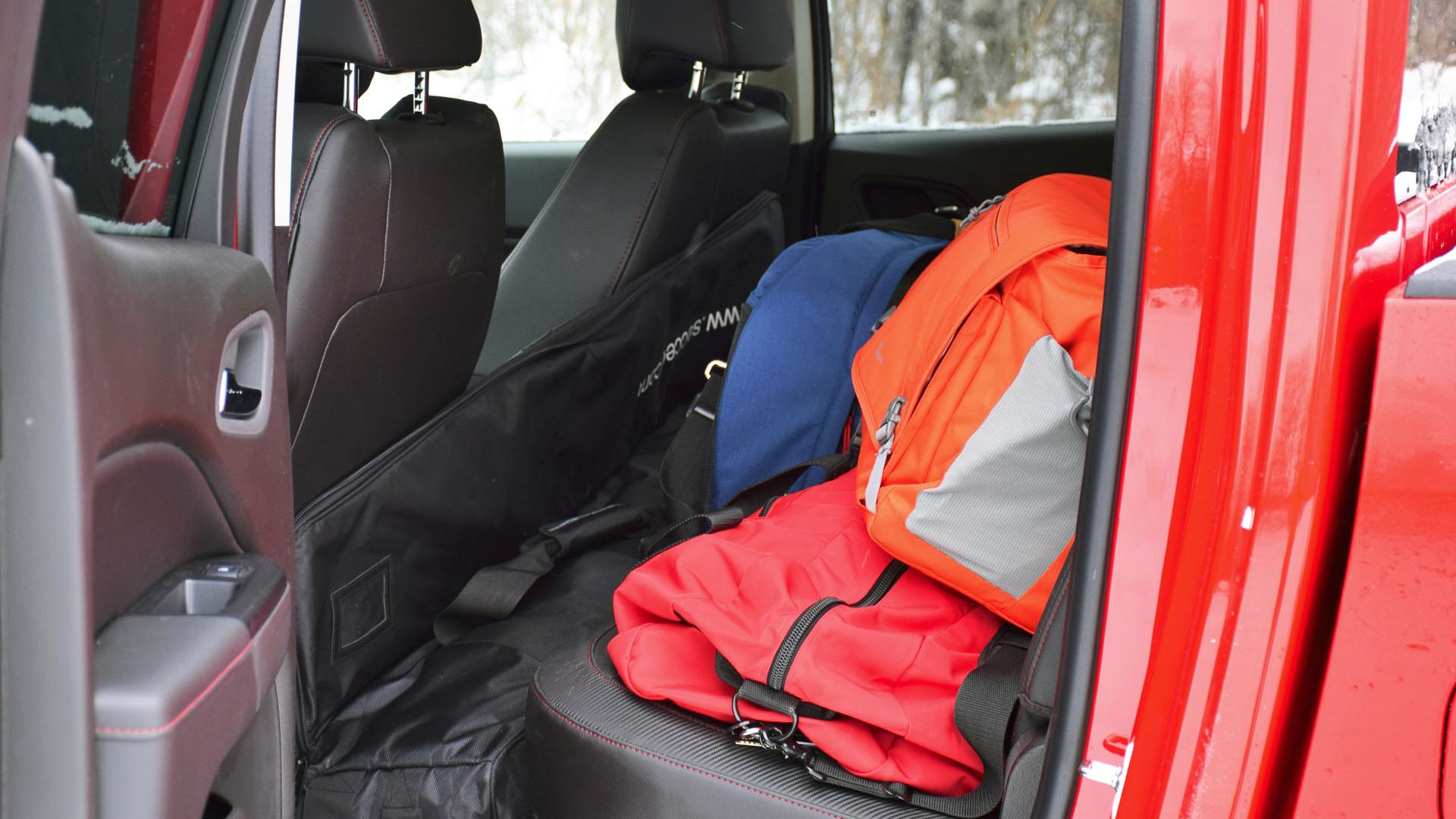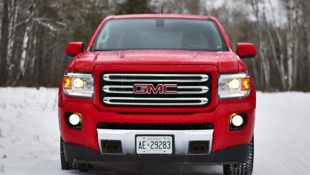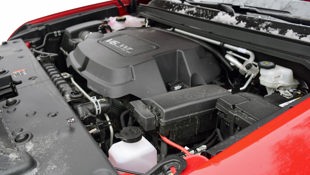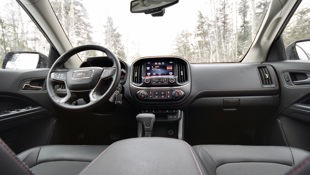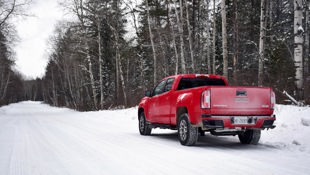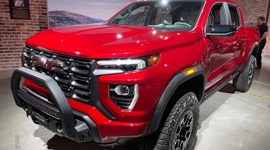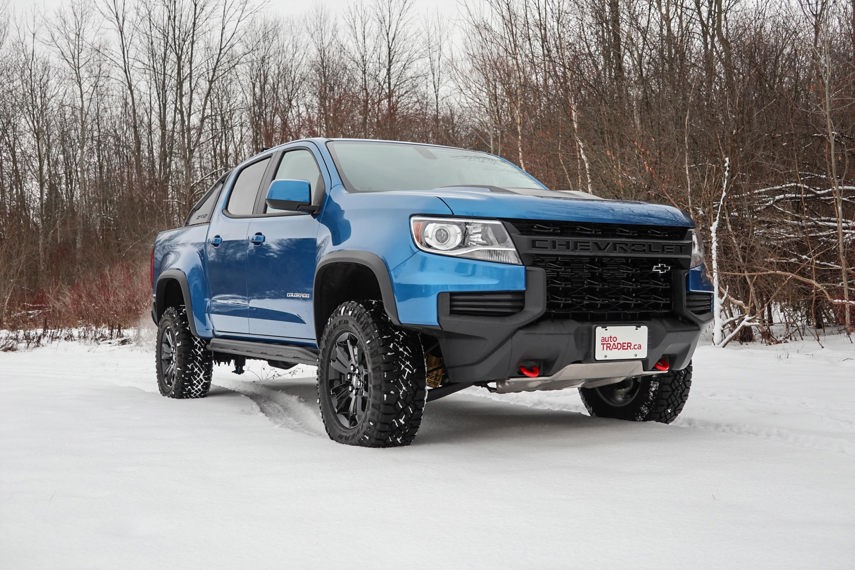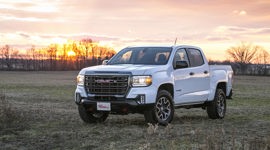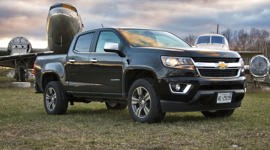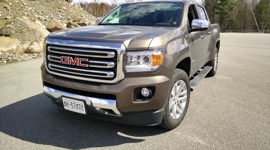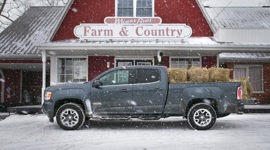 AutoTrader SCORE
AutoTrader SCORE
-
EXTERIOR STYLING8/10
-
INTERIOR10/10
-
PERFORMANCE8/10
-
COMFORT10/10
-
FUEL ECONOMY10/10
In Sudbury, we don’t have many Ferraris and Vipers and Porsches, because folks here spend disposable income less on hot cars, and more on hot sleds, hot boats, rocket-propelled ATV’s and big-ass camps and cottages.
In pickup territory, it’s the latest truck that gathers the crowds at Home Depot, the gas station, or the coffee shop.
The odd 458, 911 or Viper rolling around turns heads and gets young Instagrammers whipping out their cellulars, though in pickup territory, it’s the latest truck that gathers the crowds at Home Depot, the gas station, or the coffee shop.
This time? The new Canyon. I met plenty of folks during a week of driving, many measuring the Canyon for size against their own rigs, peeking under the hood, taking photos, investigating the tailgate bumper steps, expressing surprise at how big the Canyon is in person, asking about the price, and commenting on how the tested unit had a side profile that reminded them strongly of a Toyota Tacoma.
At writing, that Tacoma, as well as competitors like the Nissan Frontier and to a lesser extent the Honda Ridgeline, were getting old. Even a brand spanking new copy of one of these was engineered and designed a decade ago. And the Canyon, albeit having been on sale overseas for a few years, is hoping some of the fresh, modern and new bits it has to offer will help to steal some of the pie from the limited selection of mid-size trucks available here, now.
Does being the newest truck on the block make the Canyon the best? Maybe so, maybe no. But, being a new model does enable the promise of great fuel efficiency with the most modern powertrain lineup in the segment at the moment. Direct injection, six-speed transmissions and variable valve timing are all on offer, in all models. Get the 3.6L V6 for 305 horsepower, and you’ll leave the output of the same model-year Toyota and Nissan V6 engines, which are bigger in displacement, in the dust. Torque is at or near the top of the field, too.
Canyon also offers hazard-detection safety systems yet unseen elsewhere in the mid-size segment, and OnStar, and connected-car technology with Smartphone control, to the same effect. If it’s 3 am and you’re worried about your Canyon’s tire pressure, you can check it on your iPhone. Or, start your Canyon in the Park N Fly the second your plane lands. Or look up a cool attraction on your phone and send it to the truck’s navigation system. Slick.
Like selection? Pick two or four wheel drive, two or four doors, four or six cylinder power, several bed and body combinations and a bunch of trim levels to fine-tune beyond that. And when you’re done with those decisions, there are accessories as well.
Helping you with truck-guy things are features like the torsion-rod equipped tailgate, which opens without slamming or making nearby folks think you’re angry, and without accidentally whacking your clumsy offspring in the noggin. The rear bumper has integrated corner steps, easing the climb into the box when you’ve got truck-guy things to do back there. And, if your truck-guy things involve towing, Canyon can haul up to 7,000 pounds.
Ahead of the box, the tester’s second seating row offered up adequate room for two adults, and some extra floor space and shallow storage bins beneath with the seat bottoms flipped up. The area beneath the seat bottoms is shaped awkwardly, seems to waste a fair bit of space, and made your writer wonder why it’s not just flat, like, say, a Honda Ridgeline.
Up front, for the driver, the cabin is trimmed nicely, offers a bit of stitching and displays some upscale materials for a touch of sophistication. The seats look fantastic with a faux carbon-fibre weave and “All Terrain” embossment. There’s a touch of high-tech flare too, thanks to the full-colour touchscreen display in the centre console, the premium-looking climate controls with integrated digital readouts, and the smaller full-colour driver computer display in the instrument cluster. In fact, the Canyon has something largely missing in its segment: a fancy colour interior.
“Hey, guys?? Should we use Medium Grey #1 for the dashboard? What about Medium Grey #2? And what about the seats? Medium Grey #2 as well?” said the folks designing the currently-available Japanese mid-size pickup cabins some years ago. “Well, we used Medium Grey # 2 on everything else, so we better not screw around. Just do everything in Medium Grey #2”.
There’s also a boatload of storage on board for your things of all shapes and sizes: gloves, wallets, pens, change, beverages, sunglasses and pocket-sized technology of all sorts. Numerous charge ports, USB or otherwise, were in immediate reach, and, in what’s probably the best feature ever seen in a pickup-truck ever, there’s a card holder just behind left side of the steering wheel for your Timmies coffee card so you never lose it. You’ll love this feature, and you’ll love the remote start that pre-heats the seats for you when it’s cold, too.
How’s she drive? First, you sit upright in the Canyon, with your legs below you, which is in contrast to the toboggan-like driving position of the Tacoma on account of that machine’s shallow floor.
The tester’s All Terrain package saw a suspension calibration that’s tough and rugged and feels like it’s giving potholes a punch to the jaw: drive over even really rough roads, and it feels like the road is getting the lousy end of the deal. On smooth highways, the suspension is relaxed enough, working with the long wheelbase and commanding driving position for a comfortable confidence. If you’re checking out a model with the All Terrain package, be sure to test-drive it on the roughest roads you can find, confirming that you find the ride to feel tough and solid, not jarring or uncomfortable.
Steering is weighted nicely, especially for use on snow-covered highways: it’s heavy and slow enough to make locking confidently onto one’s line, and making gentle inputs, easy. It’s not razor-sharp or ultra-precise, but the directness to the Canyon’s steering is refreshing compared to so many older-school pickups that use their steering system more as a suggestion box. And in parking lots, even the tested lengthiest-possible version of the Canyon was maneuverable enough to get around with minimal worry of paint swappage.
Your writer noted one disappointment in the ride department. The remarkably low noise levels characteristic of the new-generation big GM trucks (Silverado and Sierra) haven’t made their way into the Canyon by way of the claimed sharing of DNA between the models. The Silverado, quite seriously, lets less noise into its cabin at speed than some six-figure luxury cars. Your writer had hoped that’d be the case in the Canyon, but it’s not. It’s not loud, it’s just not library-quiet like its big brother. Further, it’s a good thing the 3.6L V6 sounds decent, since if you’re on the throttle, its raspy warble is always there.
Some winter driving notes: with the locking rear differential included, drivers patient with their right foot and not afraid of a little slippage here and there will rarely have to use the four-wheel drive, even in deep snow. With virtually no spin required to engage, it locks the rear axle together and gets things moving straight away. With Canyon’s locking rear diff, there’s no sitting and spinning while you try to get up a hill out of a four-way stop as everyone points and laughs at your unlimited-slip differential.
Remarkable too is the combined effect of the rear locking diff and the hill start assist, which prevents roll-back on icy hills. Without engaging four-wheel drive, Canyon made it up a steep, very slippery hill, with hardly any wheelspin at all. And that’s on factory rubber (not winters) and with nothing in the box. Turn on the automatic four-wheel drive setting to send power to all four wheels in milliseconds when the going gets slippery.
The chassis electronics, and the locking rear end, help make great use of available traction. Proper winter tires will provide more actual traction to work with too – though the tester rolled on factory all-terrain rubber with minimal issue other than excessive stopping distances. Also notably, the stability control dials up its sensitivity with vehicle speed, and even the light-in-the-back Canyon rarely turned in anything other than reliable grip.
Gripes? Aside from the oddly-shaped rear under-seat floor area and the higher-than-expected noise levels, I was left with just one: the wish for a display in the fancy driver computer to check which four-wheel drive mode I had engaged, if at all. The mode is indicated via the selector dial’s position, though that’s blocked by the steering wheel.
Ultimately, a power, feature content and technology advantage over the competition, along with nice touches and a fresh look throughout should help this new Canyon move from dealer lots with ease. Check one out, along with proven mid-size truck performers from Toyota, Nissan and Honda.
| Warranty: 3 years/60,000 km; 5 years/160,000 km powertrain; 6 years/160,000 km corrosion perforation; 5 years/160,000 km 24-hour roadside assistance Competitors: |
| Model Tested | 2015 GMC Canyon SLE 4WD LWB |
|---|---|
| Base Price | $36,200 |
| A/C Tax | $100 |
| Destination Fee | $1,695 |
| Price as Tested | $41,725 |
|
Optional Equipment
All Terrain Package - $1,400, Off-Road Assist Steps - $780, Convenience Package - $550, Bedliner - $525, HD Trailering Package - $275, Block Heater - $100, Wheel Locks - $60.
|
|
